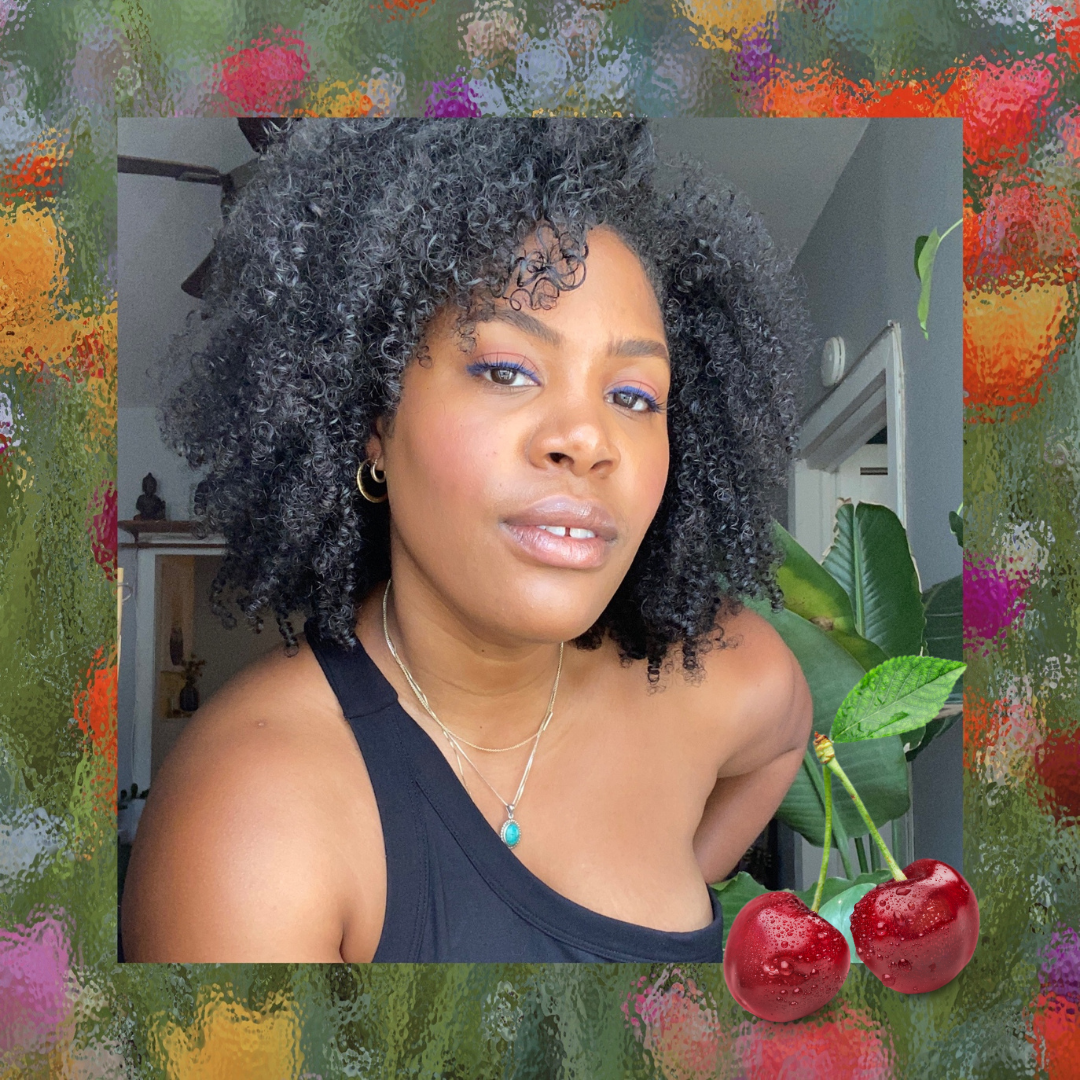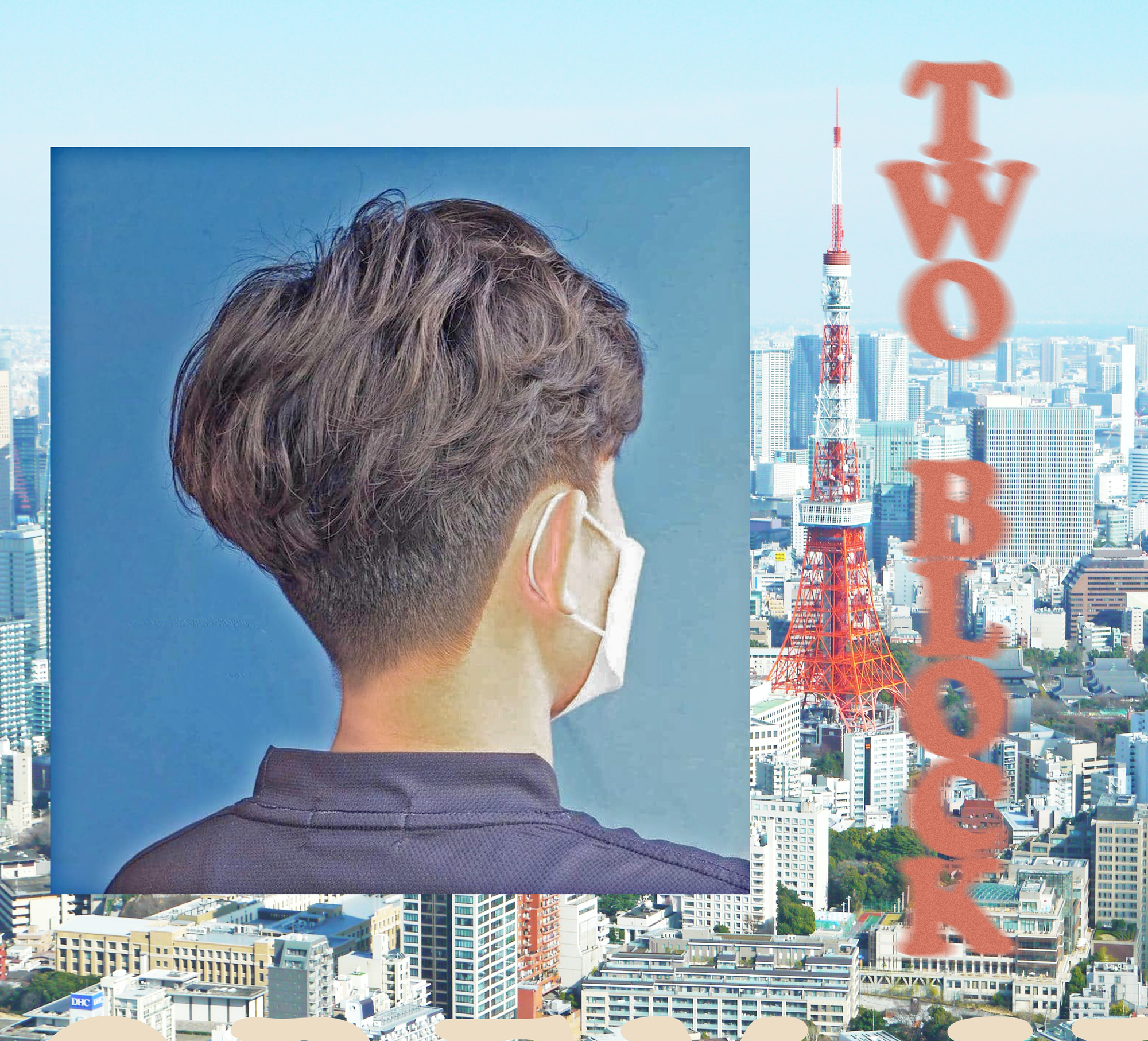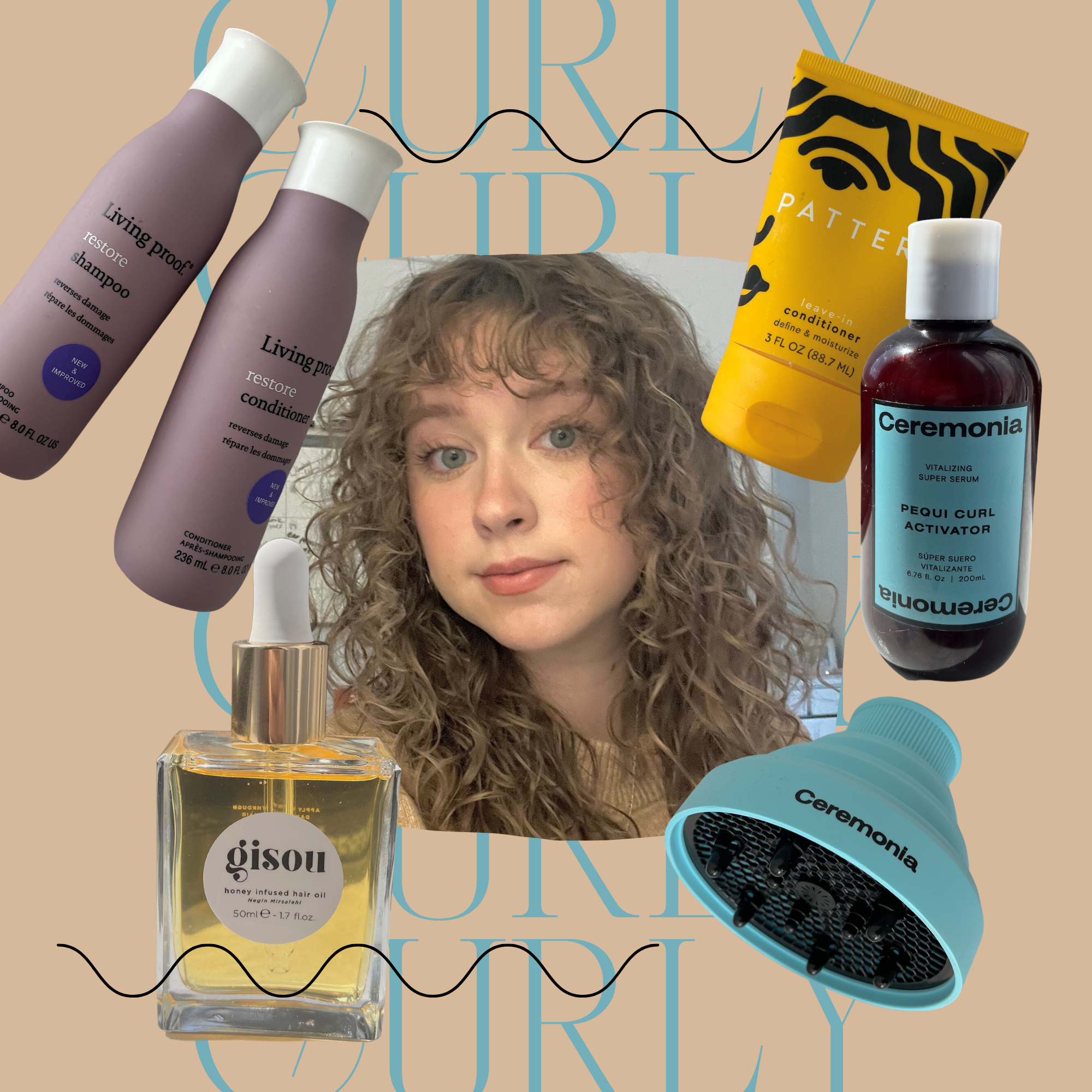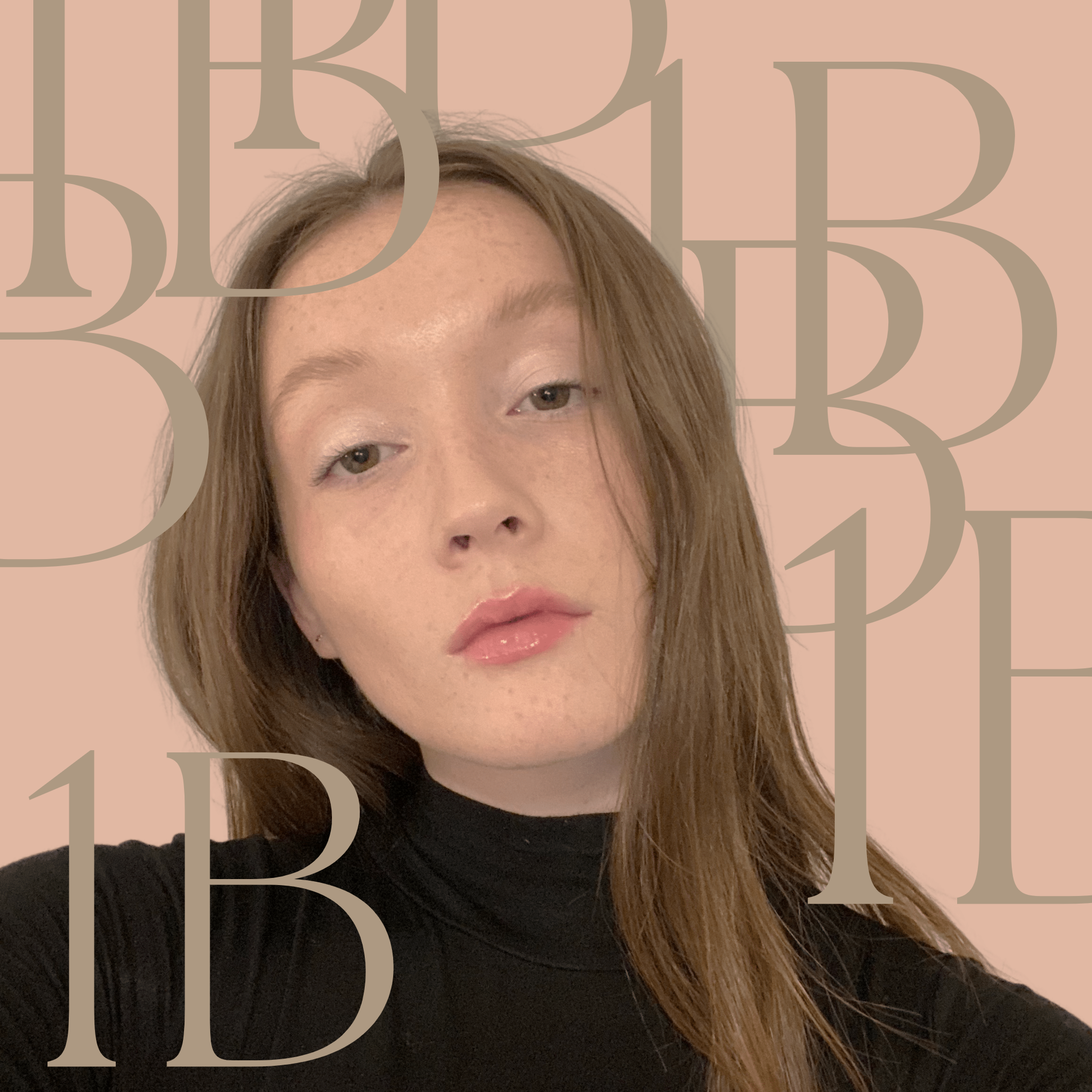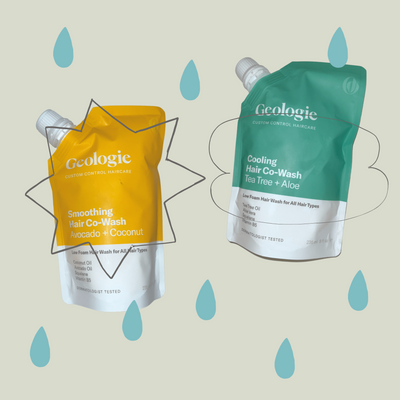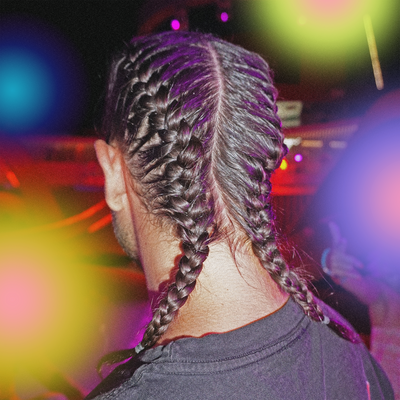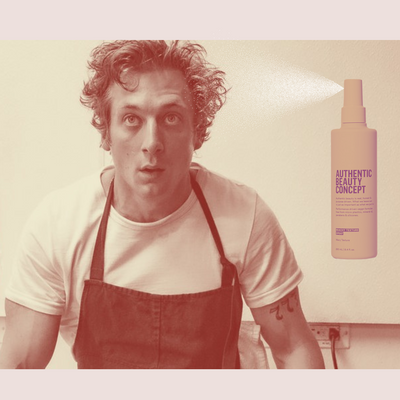Let’s go back to when I was born. I had the bounciest curls, always tied up in two poofs, with an extensive hair routine orchestrated by my mom and Johnson & Johnson’s No Tear line. She would take her time every morning to do my hair until I reached 7th grade, with a sleek side part leaving my forehead red with the round-brush scratches. In elementary school, I didn’t face any bullying because of my hair type, in fact, I was so proud my hair was so long and thick I could use it as a scarf if I wanted to.
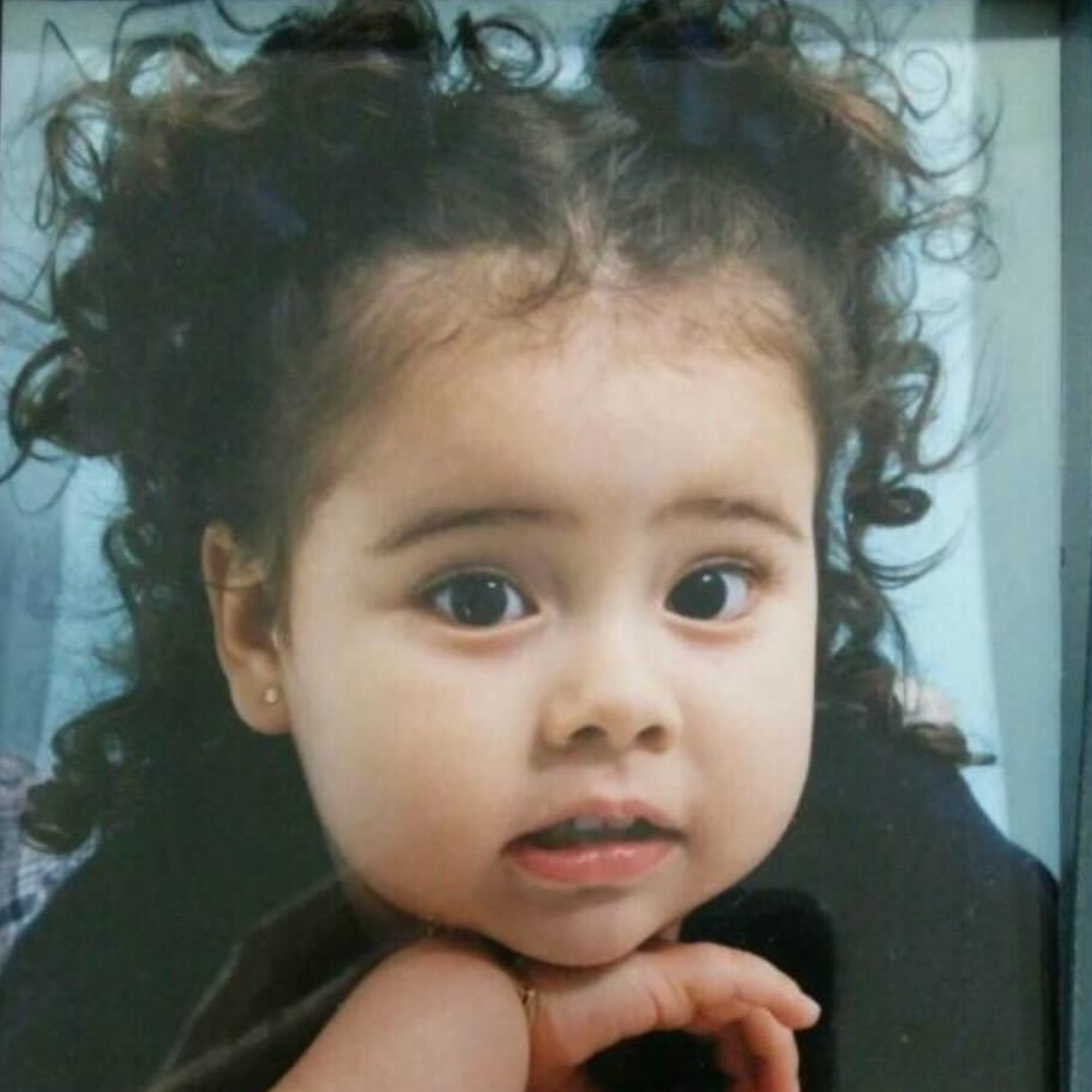
Never did I think I would be conscious of my hair texture until I reached high school. I just wanted to try different haircuts besides butt-length hair, so I started straightening my hair to achieve sleek straight locks. I was still very confident in my curl pattern and thick hair; I just didn’t know of the existence of heat protectants, which left me with tons of split ends.
Thanks to the unholy trinity of math, chemistry, and physics, I experienced hair loss when I was 15, with batches of hair coming off my head — why would you stress out a teenager that way? My upcoming tenure at an arts school! That summer, my mom and I had to spend every week in front of the sink testing out DIY remedies, from calendula sprays, rosemary water, aloe vera (turns out you have to make it a certain way or it’ll break you out), and homemade shampoos.
What would be my surprise when I come back to the classroom? Two girls in section B had lice, and somehow that was transmitted to me, even if I was in section A. Because they had straight hair, the teachers didn’t even think of accusing them of lice. Instead, they blamed the outbreak on the two people with curly hair.
When I reached my junior year of high school, our coordinator decided to come into the classroom to supervise and, in the process, drop a microaggression regarding my hair, which, of course, infuriated me. In a disgusted tone said, “Your hair is too… abundant,” followed by, “You should brush it. The hair is sticking out of your pony.”
From that day, I started getting straightening perms every three months on the dot, in order to not get sent home. After graduation, I had my first big chop.
Since I’ve moved from Venezuela to the US, my hair routine has changed because I learned to love my texture with a little help from my friends (as sung by The Beatles.) My hair is now an essential part of how I keep in touch with my Latino identity.
Here are the products I use to maintain my 2c–3b curls.
Ichikami Smooth and Sleek Shampoo and Conditioner
After having terrible rashes all over my scalp after my last straightening perm over a year ago, I decided to go to my local Japanese store and purchase shampoo. The sulfate-free formula helps perms last longer, and the rice-based shampoo helps with my frizziness. Since then, I have purchased the refill packets to pour them into the original container.
Bumble & Bumble Hairdresser's Invisible Oil Heat/UV Protective Primer
I figured from my past mistakes I would need a heat protectant to blow-dry and straighten my hair. So I ran to Ulta the day before my first beauty job. I have to confess; this has been the only heat protectant I’ve tried. Hey! If it works, why fix it? I also use it as my styling cream and detangler. I don’t know if I should buy those products separately.
Mise En Scène Perfect Hair Serum
This is a serum-to-oil product. I got it after a recommendation from my friend that also uses it to oil her hair every day. I apply it to damp hair before scrunching it for the perfect curl, or to dry hair as a final touch after styling.
CP-1 Scalp Scaler
When I’m not too physically exhausted to function, I take extra time in the shower to massage this scrub into my scalp. Start with damp hair, distribute evenly all over, massage for a few minutes, and rinse. I like to do this twice before proceeding with regular shampoo and enough conditioner to detangle in the shower. (I thought it would come with a beak-like dispenser, it turns out that’s just the shape of the bottle.)
READ MORE LIKE THIS
